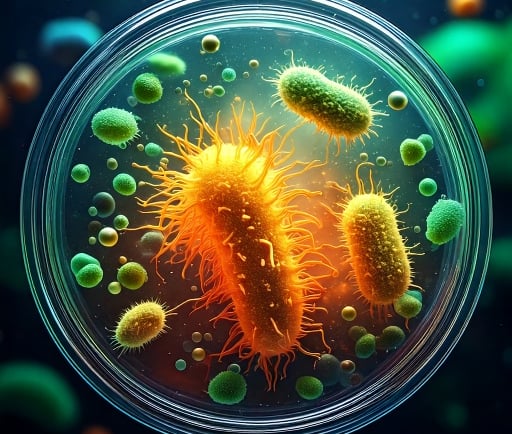The Long-Lived Bacteria Below the Ocean Floor


Introduction to the Discovery
In an astonishing find, scientists have recently uncovered long-lived bacteria that have the rare ability to reproduce only once every 10,000 years. These microorganisms were discovered in rock formations situated approximately 1.5 miles beneath the ocean floor, dating back an impressive 100 million years. This extraordinary revelation not only reshapes our understanding of microbial life but also underscores the remarkable endurance of these tiny organisms in extreme environments.
The Significance of the Findings
The discovery of these ancient bacteria is pivotal for various fields, including microbiology, geology, and astrobiology. The bacteria's incredible longevity challenges existing theories about the limits of life and resilience in adverse conditions. Researchers suggest that understanding the mechanisms that allow such life forms to persist for eons could offer insights into the potential for life on other planets. This could reshape the ongoing discourse about extraterrestrial life, as the extreme conditions found in the depths of our oceans mirror what might be found on celestial bodies.
Investigating the Survival Mechanisms
Scientists believe that the long-lived bacteria have evolved unique survival strategies that enable them to thrive in nutrient-limited environments. Unlike many bacteria that reproduce frequently, their rare reproduction cycle allows them to conserve energy and resources. This adaptation is particularly intriguing, prompting ongoing investigations into the genetic makeup and metabolic pathways of these microorganisms. Such studies may reveal how life can endure through time and adapt to ever-changing environmental factors. Additionally, these findings continue to shape the dialogue on the potential applications of such bacteria in biotechnology and medicine.
In conclusion, the discovery of these long-lived bacteria deep beneath the ocean floor represents a groundbreaking advancement in our understanding of life’s resilience. As researchers delve deeper into the implications of this find, the excitement surrounding the potential for discovering life in extreme environments continues to grow. The lessons we learn from these ancient microorganisms will not only enrich our scientific knowledge but may also inspire future explorations into the unknown realms of our universe.
